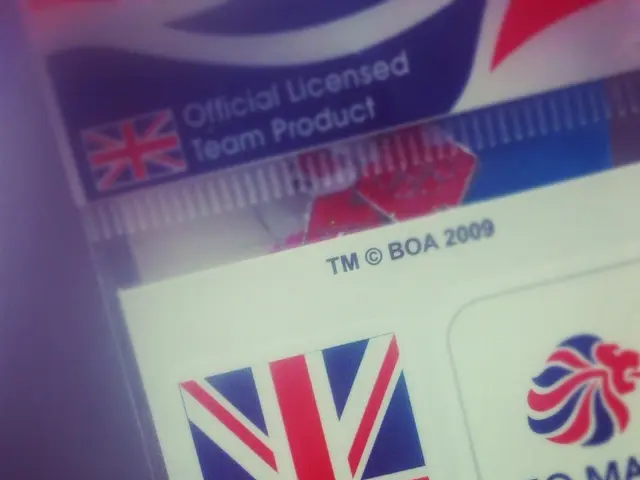Decoding Acid-Base Mysteries: A Thorough Tutorial on Estimating pH Values Based on Ka Constants
In various fields such as chemistry, biology, environmental science, medicine, and industry, calculating pH from the Ka value of a weak acid is an essential skill. This article outlines the steps to accurately determine the pH of a weak acid solution using the quadratic formula and considering factors that may affect the accuracy of the calculation.
Steps for Calculating pH from Ka Value
- Obtain Ka value: First, obtain the acid dissociation constant (Ka) at the temperature of interest. Use tabulated or experimentally derived values, and adjust if necessary.
- Calculate equilibrium concentrations: Use the ICE table (Initial, Change, Equilibrium) to express concentrations. The acid dissociation reaction for a weak acid HA can be represented as follows:[ HA \rightleftharpoons H^+ + A^- ]With the acid dissociation constant defined as:[ K_a = \frac{[H^+][A^-]}{[HA]} ]At equilibrium, the concentrations are:[ [HA] = (1-\alpha) C_0, \quad [H^+] = \alpha C_0, \quad [A^-] = \alpha C_0 ]where ( C_0 ) is the initial concentration of the acid and ( \alpha ) is the degree of dissociation.
- Formulate the equation for ( \alpha ): Rearrange the equation for ( K_a ) to form a quadratic equation:[ \alpha^2 + \frac{K_a}{C_0} \alpha - \frac{K_a}{C_0} = 0 ]Solve for ( \alpha ) exactly (without approximation if possible) using the quadratic formula:[ \alpha = \frac{-b \pm \sqrt{b^2 - 4ac}}{2a} ]where ( a = 1 ), ( b = K_a/C_0 ), and ( c = -K_a/C_0 ).
- Calculate [H^+] and then pH: Finally, compute the hydrogen ion concentration ([H^+]) as ( \alpha C_0 ), and then the pH as ( -\log [H^+] ).
Factors Affecting Accuracy
Approximations validity
For very weak acids with small ( K_a ), assuming ( \alpha \ll 1 ) simplifies the calculation by approximating ( 1-\alpha \approx 1 ), but at higher acid concentrations or stronger weak acids, this can introduce errors. Solving the quadratic exactly avoids this.
Temperature dependence
( K_a ) values depend on temperature due to changes in enthalpy and entropy of ionization. Use experimentally determined ( K_a ) at the solution temperature or apply van’t Hoff equation to adjust ( K_a ) for temperature changes.
Ionic strength effects
Ionic strength alters activity coefficients of ions, making the effective concentration differ from the analytical concentration. The true equilibrium constant is an activity constant ( K ), related through:
[ K_a = \frac{a_{H^+} a_{A^-}}{a_{HA}} = \frac{\gamma_{H^+} [H^+] \gamma_{A^-} [A^-]}{\gamma_{HA} [HA]} ]
where ( \gamma ) are activity coefficients, which decrease with increasing ionic strength, affecting dissociation equilibria. Correcting for ionic strength requires calculating activity coefficients (using Debye–Hückel or extended models) and using activities instead of concentrations.
Other medium effects
The dielectric constant and solvent effects, which can vary with temperature or additives, influence the proton dissociation equilibria.
Summary
In summary, to achieve the most accurate pH calculation, obtain the ( K_a ) value at the temperature of interest, calculate equilibrium concentrations exactly (solve quadratic without assuming ( \alpha \ll 1 )), account for ionic strength by incorporating activity coefficients into the equilibrium expression if ionic strength is significant, compute pH as ( -\log [H^+] ) or ( -\log a_{H^+} ) if activity correction is applied, and consider factors such as temperature and ionic environment for best results. This approach addresses the limitations of simpler approximations and factors influencing weak acid dissociation equilibria such as temperature and ionic environment.
[1] Atkins, P. W., & de Paula, J. (2018). Physical chemistry (10th ed.). Oxford University Press.
[3] McMurry, J. (2019). McMurry's organic chemistry (9th ed.). Cengage Learning.
[4] Lehninger, A. L., Nelson, D. L., & Cox, M. M. (2000). Principles of biochemistry (3rd ed.). W.H. Freeman.
[5] Fleming, M. C. (2013). Physical chemistry: a comprehensive resource (4th ed.). Oxford University Press.
- In the realm of medical-conditions and health-and-wellness, understanding the pH of weak acid solutions is crucial, as it can impact various biological processes and medical diagnoses.
- The accuracy of determining pH from the Ka value of a weak acid is influenced by factors such as temperature, ionic strength, and the dielectric constant of the solution, which are all critical aspects in the field of science and industry, particularly in the study of chemical reactions and medical-conditions.







